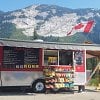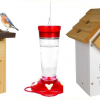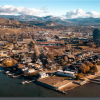Watering your garden earlier than usual? Allergies acting up? Noticing that all the normally hard-packed dirt on your favourite hiking trail is already dry and crumbly like it’s the middle of August?

You're not imagining things. The Thompson Okanagan is indeed in the midst of one of its driest late winter/early spring periods in modern history.
And while all that sun and all those warm temps are welcome respite from the ongoing pandemic, there are downsides too. Like a potentially more severe fire season. Maybe.

More on that in a moment.
So, just how dry is it? The March 31st update of the "Canadian Drought Monitor," which Agriculture and Agri-Food Canada calls "Canada's official source for the monitoring and reporting of drought in Canada," reveals that big pockets in the southerly portion of the Thompson Okanagan is currently rated "D0."

That’s the driest rating possible, and it's a conclusion Kelowna-based Environment Canada meteorologist Doug Lunquist wholeheartedly confirms.
"It's been very dry," said Lunquist today. "We're definitely concerned about the dry conditions."

Lunquist spilled some eye-popping stats. In March, for example, Kamloops received 8% (1 mm) of its normal 13 mm precipitation. Kelowna tied its driest March ever at 3 mm, versus the regular 22.
Vernon, which typically sees 25 mm, had its second driest March (2 mm) since record-keeping began in 1901, and Penticton its fourth driest on record with 5 mm of measurable precip versus the usual 24.
"Basically, it's been dry everywhere since March," said Lunquist. "And some parts, particularly the central Okanagan, it’s been drier longer -- practically since the beginning of the year."

We asked if the trend will continue throughout the spring, and he answered that Environment Canada can't effectively predict precipitation beyond a week to ten days.
But, he said, "It does look a bit more unsettled in the next week. We're forecasting periods of rain on Saturday for Kelowna with a system moving up from the south, and showers throughout the weekend and next week for Kamloops."
Moreover, said Lunquist, the last half of May, all of June, and the first week of July is typically the wettest time of the year in the Okanagan.

"And this year it looks like it’s starting early."
Still, Lunquist cautioned that, "Because it's so dry now, we're in big trouble if we don’t get the usual rains of May or June," adding that the public should take care with sun exposure because "our UV is high already."
Meanwhile over at BC Wildfire Service, information officer Gagan Lidhran called recent conditions "unseasonably warm."

"And because we didn’t receive significant amounts of precipitation over the winter and haven't received our spring rains yet," she continued, "fuels like grass and needles are dry and volatile. And combined with the warmer temperatures and windy conditions, we are seeing that fires are spreading quite quickly."
Since April 1st, the Kamloops Fire Centre has seen 32 fires. Ten are currently active, and 1,646 hectares have burned thus far.
But will it be a tough fire season going forward? According to Lidhran, BC Wildfire needs quite a few more weeks -- certainly well into the monsoon season Lunquist mentioned -- to get a better gauge.

What matters most going forward isn't just the amount of rain we'll get, but the pattern of that rainfall.
"There are so many factors that go into predicting whether fuels will retain moisture,' said Lidhran. "More rain in consistent patterns across the season would be more helpful than having a downpour and then going into a significant dry spell."
And, she said, the current fire danger rating of "low to moderate" doesn’t tell the whole story at lower elevations, where people tend to live.

"Because of the unseasonably warm temperatures and the dryness of the fuel right now, especially at valley bottoms and low elevations, I'd say the risk is moderate there."
Lidhran also offered some advice for anyone considering activities such as campfires and open burns.
"It's important to remember that early spring fires are usually human-caused," she said. "Keep your campfire a half meter by a half-meter. Be sure to have a shovel and a minimum eight litres of water on hand. Don’t burn in windy conditions, maintain a fire guard around the perimeter, and be sure it's cool to the touch when you leave."

For more information on fire prevention, current provincial wildfire hotspots and more, go here. For updated seasonal outlooks throughout the province, turn here.
















